Pearson BTEC • Applied Science 2016 NQF
Latest uploads for Applied Science 2016 NQF at Pearson BTEC. Looking for Applied Science 2016 NQF notes at Pearson BTEC? We have lots of notes, study guides and study notes available for Applied Science 2016 NQF at Pearson BTEC.
-
2323
-
53
-
376
Courses Applied Science 2016 NQF at Pearson BTEC
Notes available for the following courses of Applied Science 2016 NQF at Pearson BTEC
-
Unit 1 - Principles and Applications of Science I
-
Unit 2- Practical Scientific Procedures and Techniques
-
Unit 3 - Science Investigation Skills
-
Unit 4 - Laboratory Techniques and their Application
-
Unit 5 - Principles and Applications of Science II
-
Unit 6 - Investigative Project
-
Unit 7 - Contemporary Issues in Science
-
Unit 8 - Physiology of Human Body Systems
-
Unit 9 - Human Regulation and Reproduction
-
Unit 10 - Biological Molecules and Metabolic Pathways
-
Unit 11 - Genetics and Genetic Engineering
-
Unit 12 - Diseases and Infections
-
Unit 13 - Applications of Inorganic Chemistry
-
Unit 14 - Applications of Organic Chemistry
-
Unit 15 - Electrical Circuits and their Application
-
Unit 16 - Astronomy and Space Science
-
Unit 17 - Microbiology and Microbiological Techniques
-
Unit 18 - Industrial Chemical Reactions
-
Unit 19 - Practical Chemical Analysis
-
Unit 20 - Biomedical Science
-
Unit 21 - Medical Physics Applications
-
Unit 22 - Materials Science
-
Unit 23 - Forensic Evidence, Collection and Analysis
-
Unit 24 - Cryogenics and Vacuum Technology
-
Unit 25 - Forensic Fire Investigation
-
Unit 26 - Forensic Traffic Accident Investigation
Popular books Pearson BTEC • Applied Science 2016 NQF
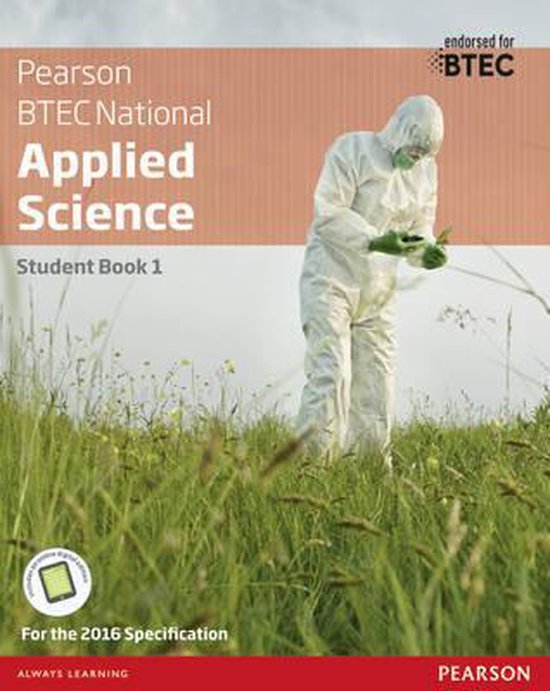
Frances Annets, Shirley Foale, Roy Llewellyn, Ismail Musa, Sue Hocking, • ISBN 9781292134093

Julie Matthews • ISBN 9781846905636
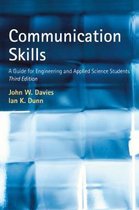
John W. Davies, Ian K. Dunn • ISBN 9780273729525

David Brentnall, Ann Fullick, Karlee Lees, Chris Meunier, Carol Usher • ISBN 9781292327648
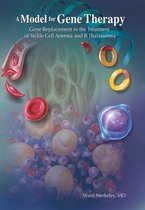
Ward Merkeley • ISBN 9781664136700
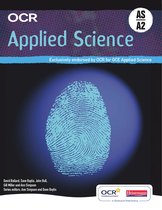
David Ballard, John Bull • ISBN 9780435692124
Latest content Pearson BTEC • Applied Science 2016 NQF
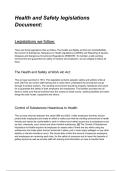
Unit 4 Applied science coursework level 4 btec nationals. Health and Safety document with legislation examples to use in your coursework. It has three different legislations being mentioned with what they do and their aims on keeping working environments, employers and workers safe. It also gives ideas and examples of common risks at a work place and how these risks are managed and prevented. Reference index available at the bottom.
- Other
- • 4 pages's •
-
PEARSON•Unit 4 - Laboratory Techniques and their Application
Preview 1 out of 4 pages
Getting your document ready...
Unit 4 Applied science coursework level 4 btec nationals. Health and Safety document with legislation examples to use in your coursework. It has three different legislations being mentioned with what they do and their aims on keeping working environments, employers and workers safe. It also gives ideas and examples of common risks at a work place and how these risks are managed and prevented. Reference index available at the bottom.
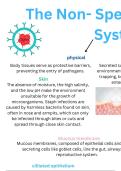
Is a poster I did for BTEC Applied Science as part of the module had to design an individual poster. The focus of the poster is the Non- specific immune system.
- Summary
- • 1 pages's •
-
PEARSON•Unit 12 - Diseases and Infections
Preview 1 out of 1 pages
Getting your document ready...
Is a poster I did for BTEC Applied Science as part of the module had to design an individual poster. The focus of the poster is the Non- specific immune system.
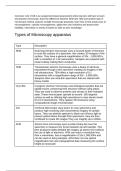
In Unit 17: Microbiology and Microbiological Techniques from the Pearson BTEC Level 3 National Extended Diploma in Applied Science, Learning Aim A and Learning Aim B work together to develop both theoretical understanding and practical skills in microbiology. Learning Aim A focuses on exploring the structure, classification, and roles of microorganisms, including bacteria, fungi, viruses, and protozoa, as well as their importance in health, disease, and industry. It helps learners understand how...
- Summary
- • 6 pages's •
-
PEARSON•Unit 17 - Microbiology and Microbiological Techniques
Preview 2 out of 6 pages
Getting your document ready...
In Unit 17: Microbiology and Microbiological Techniques from the Pearson BTEC Level 3 National Extended Diploma in Applied Science, Learning Aim A and Learning Aim B work together to develop both theoretical understanding and practical skills in microbiology. Learning Aim A focuses on exploring the structure, classification, and roles of microorganisms, including bacteria, fungi, viruses, and protozoa, as well as their importance in health, disease, and industry. It helps learners understand how...
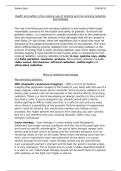
Second assignment for unit 21 btec applied science. Achieved a distinction.
- Essay
- • 10 pages's •
-
PEARSON•Unit 21 - Medical Physics Applications
Preview 2 out of 10 pages
Getting your document ready...
Second assignment for unit 21 btec applied science. Achieved a distinction.
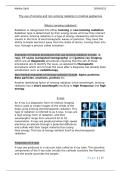
First assignment for unit 21. Achieved a distinction.
- Essay
- • 17 pages's •
-
PEARSON•Unit 21 - Medical Physics Applications
Preview 3 out of 17 pages
Getting your document ready...
First assignment for unit 21. Achieved a distinction.
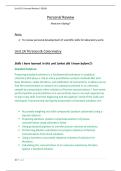
This is a BTEC Applied Science Unit 2 D that received a distinction grade. It serves as an example of work at a Distinction level, which you can refer to as a guide to help you achieve a distinction in completing your own assignment. Feel free to message me with any questions.
- Package deal
- Essay
- • 18 pages's •
-
PEARSON•Unit 2- Practical Scientific Procedures and Techniques
-
Level 3 BTEC Applied Science Unit 2 (FULL UNIT 2 ASSIGNEMNTS)• Bymahinurrahman
Preview 3 out of 18 pages
Getting your document ready...
This is a BTEC Applied Science Unit 2 D that received a distinction grade. It serves as an example of work at a Distinction level, which you can refer to as a guide to help you achieve a distinction in completing your own assignment. Feel free to message me with any questions.
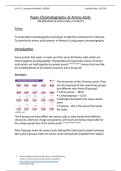
This is a BTEC Applied Science Unit 2C, Practical 3 (Paper Chromatography of Amino Acids) that received a distinction grade. It serves as an example of work at a Distinction level, which you can refer to as a guide to help you achieve a distinction in completing your own assignment. Feel free to message me with any questions.
- Book & Paket-Deal
- Essay
- • 14 pages's •
-
PEARSON•Unit 2- Practical Scientific Procedures and Techniques
-
BTEC Nationals Applied Science • Joanne Hartley, Frances Annets• ISBN 9781292134093
-
Level 3 BTEC Applied Science Unit 2 (FULL UNIT 2 ASSIGNEMNTS)• Bymahinurrahman
Preview 2 out of 14 pages
Getting your document ready...
This is a BTEC Applied Science Unit 2C, Practical 3 (Paper Chromatography of Amino Acids) that received a distinction grade. It serves as an example of work at a Distinction level, which you can refer to as a guide to help you achieve a distinction in completing your own assignment. Feel free to message me with any questions.
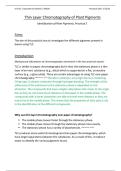
This is a BTEC Applied Science Unit 2C, Practical 2 (Thin Layer Chromatography of Plant Pigments) that received a distinction grade. It serves as an example of work at a Distinction level, which you can refer to as a guide to help you achieve a distinction in completing your own assignment. Feel free to message me with any questions.
- Book & Paket-Deal
- Essay
- • 9 pages's •
-
PEARSON•Unit 2- Practical Scientific Procedures and Techniques
-
BTEC Nationals Applied Science • Joanne Hartley, Frances Annets• ISBN 9781292134093
-
Level 3 BTEC Applied Science Unit 2 (FULL UNIT 2 ASSIGNEMNTS)• Bymahinurrahman
Preview 2 out of 9 pages
Getting your document ready...
This is a BTEC Applied Science Unit 2C, Practical 2 (Thin Layer Chromatography of Plant Pigments) that received a distinction grade. It serves as an example of work at a Distinction level, which you can refer to as a guide to help you achieve a distinction in completing your own assignment. Feel free to message me with any questions.
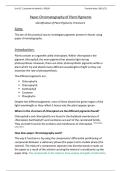
This is a BTEC Applied Science Unit 2C, Practical 1 (Paper Chromatography of Plant Pigments) that received a distinction grade. It serves as an example of work at a Distinction level, which you can refer to as a guide to help you achieve a distinction in completing your own assignment. Feel free to message me with any questions.
- Book & Paket-Deal
- Essay
- • 10 pages's •
-
PEARSON•Unit 2- Practical Scientific Procedures and Techniques
-
BTEC Nationals Applied Science • Joanne Hartley, Frances Annets• ISBN 9781292134093
-
Level 3 BTEC Applied Science Unit 2 (FULL UNIT 2 ASSIGNEMNTS)• Bymahinurrahman
Preview 2 out of 10 pages
Getting your document ready...
This is a BTEC Applied Science Unit 2C, Practical 1 (Paper Chromatography of Plant Pigments) that received a distinction grade. It serves as an example of work at a Distinction level, which you can refer to as a guide to help you achieve a distinction in completing your own assignment. Feel free to message me with any questions.
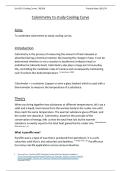
This is a BTEC Applied Science Unit 2B that received a Distinction grade. It serves as an example of work at a Distinction level, which you can refer to as a guide to help you achieve a distinction in completing your own assignment. Feel free to message me with any questions.
- Book & Paket-Deal
- Essay
- • 18 pages's •
-
PEARSON•Unit 2- Practical Scientific Procedures and Techniques
-
BTEC Nationals Applied Science • Joanne Hartley, Frances Annets• ISBN 9781292134093
-
Level 3 BTEC Applied Science Unit 2 (FULL UNIT 2 ASSIGNEMNTS)• Bymahinurrahman
Preview 3 out of 18 pages
Getting your document ready...
This is a BTEC Applied Science Unit 2B that received a Distinction grade. It serves as an example of work at a Distinction level, which you can refer to as a guide to help you achieve a distinction in completing your own assignment. Feel free to message me with any questions.
